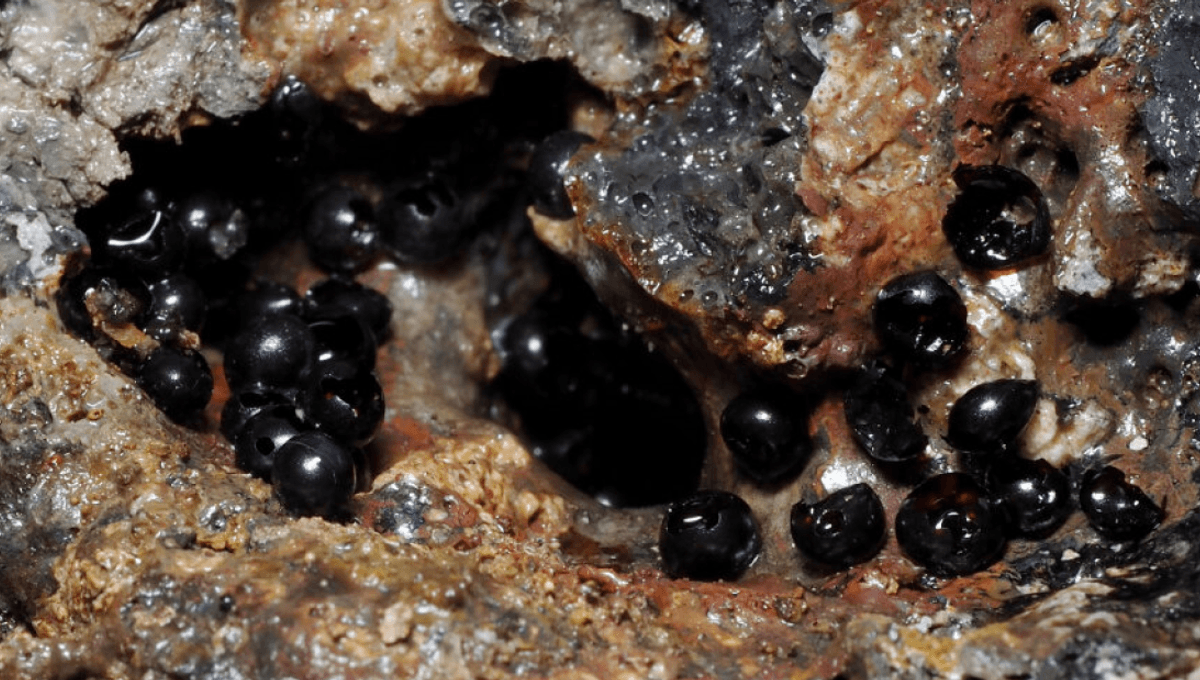
We just love a mystery egg story, and an absolute cracker was dredged up from the deep this week as researchers announced the deepest free-living flatworms ever found following the discovery of some jet-black eggs. The egg capsules, or cocoons, were found in the Kuril-Kamchatka Trench, northwestern Pacific, and mark the first time we’ve achieved such a sneak peek into these worms’ early life stages in the abyssal zone.
The eggs were discovered by Dr Yasunori Kano of the University of Tokyo who was piloting the remote-operate vehicle (ROV) Hakuho-maru and retrieved at a depth of 6,200 meters (20,341 feet). Unsure of what they were, he presented them to Dr Keiichi Kakui of Hokkaido University, who co-authored a new paper on the discovery.
“When I first saw them, as I had never seen flatworm cocoons (and I didn’t know what cocoons look like), I thought they may be protists or something,” explained Kakui to IFLScience.
“Under a stereomicroscope, I cut one of them, and a milky liquid-like thing leaked from it; after blowing the milky thing with a pipette, I found fragile white bodies in the shell and first realized that it was the cocoon of platyhelminths. At that time, I didn’t know how rare this finding was, and couldn’t identify what platyhelminth group they were. I was looking forward to studying them after coming back to my lab.”
And so, the eggy rocks were trawled up from the abyss and ferried to the Invertebrate Collection of the Hokkaido University Museum. The team managed to extract four intact egg capsules from the rocks, and found flatworm remains tucked inside. One worm was fixed in ethanol and dehydrated to make slides that the team could stain and analyze, while two other worms had their DNA extracted.
The results revealed they were looking at the remains of flatworms from the suborder Maricola in the order Tricladida. This is a staggering find because that makes the eggs’ discovery a world record depth for free-living flatworms, and – curiously – reveals that there’s not much difference in the way deep-sea flatworms developed compared to those that lurk in the shallows.
“This study provides the deepest record for free-living flatworms and the first information on their early life stages in the abyssal zone, which were very similar to those in shallow-water forms,” wrote Kakui and co-author Aoi Tsuyuki. “This similarity in development between the relatively benign shallow-water and the extreme abyssal environments suggests that triclads adapting to the latter faced primarily physiological and/or ecological adaptive challenges, rather than developmental ones.”
Some pretty big news for what looked like a few tapioca pearls, then, and there could be more to come!
“Many other precious samples were collected during the cruise we found the cocoons,” concluded Kakui. “I’m going to proceed with their research.”
The study is published in Biology Letters.
Source Link: Jet-Black Eggs Found In The Pacific Abyss Reveal A New Wormy World Record